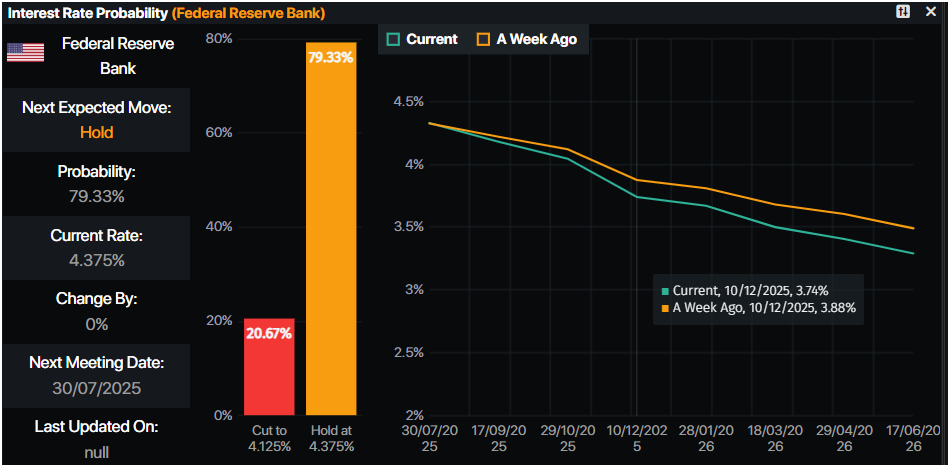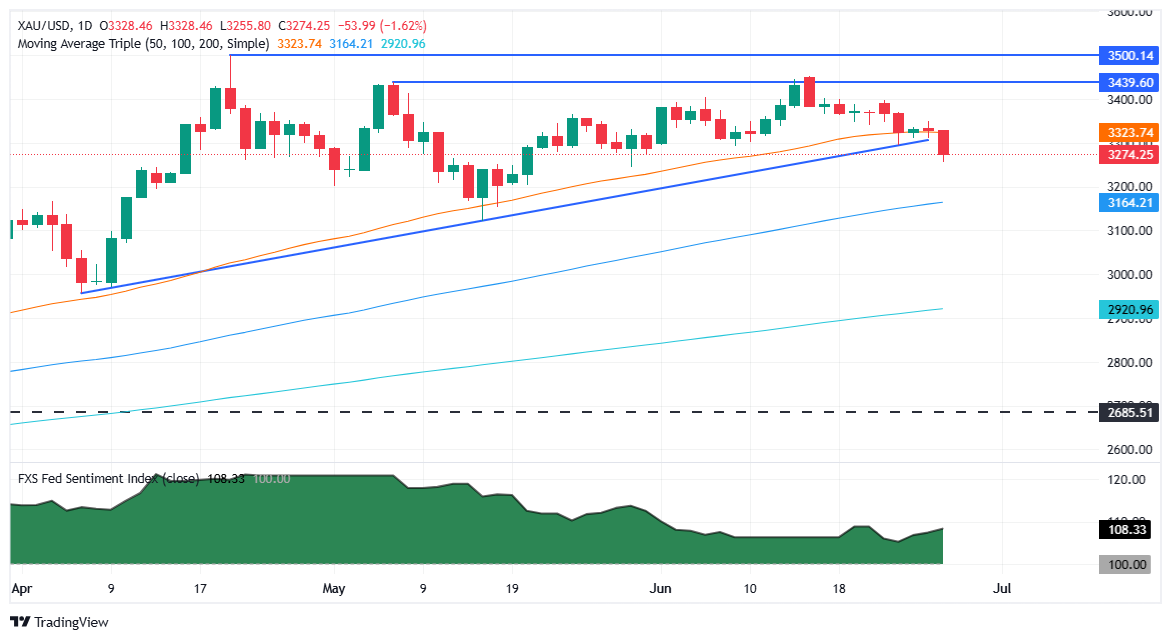Gold plunges below $3,300 as risk appetite surges on China trade deal, Middle East diplomacy

- XAU/USD falls over 1.5% as safe-haven demand wanes on global trade and geopolitical easing.
- US-China trade deal signed; more agreements expected before July 9, boosting sentiment.
- Iran signals diplomacy; Israel–Gaza war may end in two weeks, says Al Arabiya.
- Core PCE rose above forecasts; Fed’s Kashkari still expects two rate cuts in 2025.
XAU/USD technical outlook: Gold price set for a pullback to $3,200
Gold price uptrend remains in place, but in the short term, it could drop further after breaking below the 50-day Simple Moving Average (SMA) at $3,323. The Relative Strength Index (RSI) indicates that momentum has turned bearish despite the price action achieving higher highs and higher lows.
For a bullish continuation, XAU/USD must climb past $3,300. The following key resistance would be the 50-day SMA at $3,323, followed by the June 26 peak of $3,350. If surpassed, up next is $3,400. On the flip side, if XAU/USD tumbles below $3,300, the May 29 low of $3,245 and $3,200 are up for grabs.

Gold FAQs
Gold has played a key role in human’s history as it has been widely used as a store of value and medium of exchange. Currently, apart from its shine and usage for jewelry, the precious metal is widely seen as a safe-haven asset, meaning that it is considered a good investment during turbulent times. Gold is also widely seen as a hedge against inflation and against depreciating currencies as it doesn’t rely on any specific issuer or government.
Central banks are the biggest Gold holders. In their aim to support their currencies in turbulent times, central banks tend to diversify their reserves and buy Gold to improve the perceived strength of the economy and the currency. High Gold reserves can be a source of trust for a country’s solvency. Central banks added 1,136 tonnes of Gold worth around $70 billion to their reserves in 2022, according to data from the World Gold Council. This is the highest yearly purchase since records began. Central banks from emerging economies such as China, India and Turkey are quickly increasing their Gold reserves.
Gold has an inverse correlation with the US Dollar and US Treasuries, which are both major reserve and safe-haven assets. When the Dollar depreciates, Gold tends to rise, enabling investors and central banks to diversify their assets in turbulent times. Gold is also inversely correlated with risk assets. A rally in the stock market tends to weaken Gold price, while sell-offs in riskier markets tend to favor the precious metal.
The price can move due to a wide range of factors. Geopolitical instability or fears of a deep recession can quickly make Gold price escalate due to its safe-haven status. As a yield-less asset, Gold tends to rise with lower interest rates, while higher cost of money usually weighs down on the yellow metal. Still, most moves depend on how the US Dollar (USD) behaves as the asset is priced in dollars (XAU/USD). A strong Dollar tends to keep the price of Gold controlled, whereas a weaker Dollar is likely to push Gold prices up.
